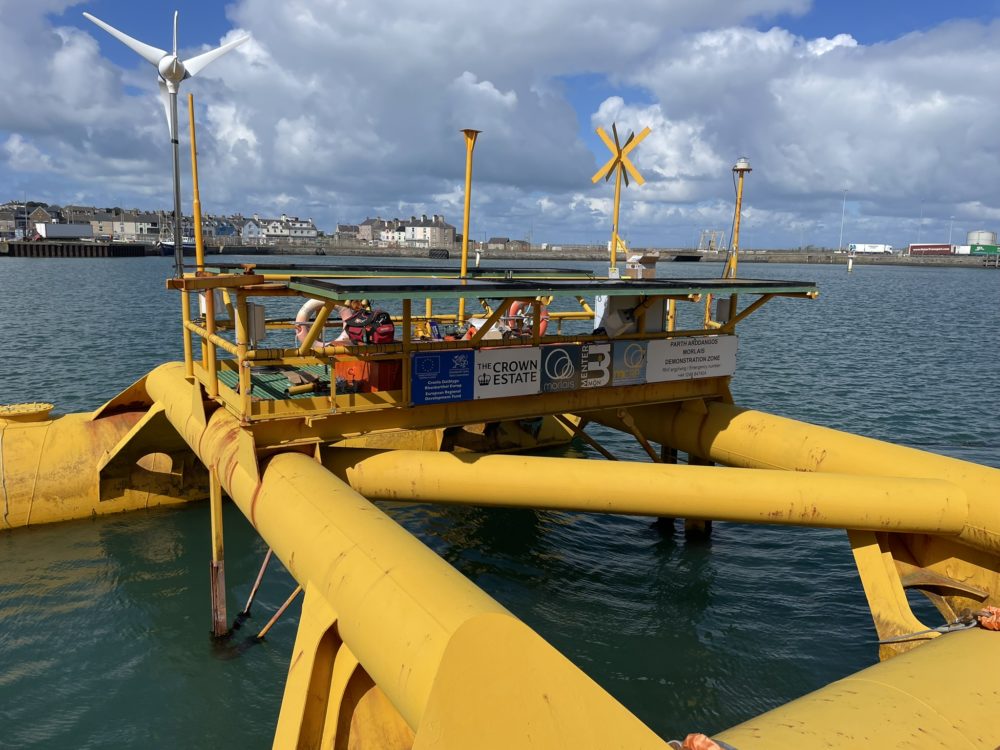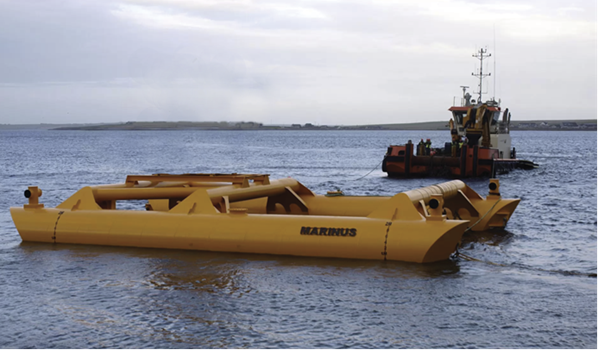Home-grown tidal energy scheme enters new phase

A data gathering buoy linked to north Wales tidal energy scheme, Morlais, embarks on an important mission to ensure the area’s wildlife is safeguarded this week following a launch off the coast near Holyhead.
The vessel also known as the Marinus LiDAR buoy, is part of a significant research exercise to ensure that marine mammals and birds are safeguarded as Morlais becomes operational from 2026.
The unmanned buoy was first deployed at the site by the Menter Môn-led, Marine Characterisation and Research Project (MCRP) in 2023. Now, following rigorous testing and refurbishment Marinus is fully operational again, and will use the latest technologies to continue its data collection role.
Milestone
As part of this, state of the art system integrated monitoring and analysis equipment has been successfully installed on the buoy which includes, sonar imaging, acoustic monitoring and video imaging.
All have been specifically calibrated to local conditions and will track wildlife behaviours and patterns in the zone where Morlais tidal energy devices are set to be deployed.
Morlais is a tidal stream energy project off the north west coast of Holy Island, Ynys Môn. It aims to benefit local communities, the economy and climate by generating clean low carbon electricity using tidal power.
It is the largest consented tidal energy site in Europe and is manged by Anglesey-based social enterprise, Menter Môn who secured the Crown Estate lease for the 35KM2 zone of seabed in 2014.
Since then, and having secured consent in 2021, work has been ongoing to put onshore infrastructure in place. The landfall substation near south stack was officially opened in 2023.
The first turbines are expected to be deployed from 2026. The project is phased, and turbines will be deployed gradually to protect wildlife and habitats.
Once operational the site has potential to generate up to 240MW electricity – enough for about 180,000 typical Welsh households.
Job creation
It is seen as a unique model within the sector as it will provide developers of tidal turbines with a reduced risk model of deploying their technology on a commercial scale.
Rather than producing electricity itself, Morlais will provide the developers with the consent and infrastructure they need to generate electricity.
Four developers have so far secured contracts for difference for electricity they generate at Morlais. The turbines they use will be different – but all will use the tidal resource off the coast of Holy Island, which is one of the strongest in Europe.

As a home-grown project, securing benefits to the north Wales economy is central to the vision for Morlais in terms of creating jobs, skills development, and attracting investment.
Local ownership means any profit from the scheme will come back into the local community through Menter Môn projects. It is also the only project on this scale to be run by a third sector organisation.
Milestone
Helen Roberts, MCRP Project Manager, said: “This is another important milestone for us and the tidal energy sector.
“The operational trial of the technology over the next 12 months is a significant step forward in our delivery of an effective and transferable monitoring and mitigation system to safeguard marine mammals and diving seabirds in developments like Morlais.
“We look forward to analysing the findings and sharing our learning with colleagues across the tidal energy sector.”
The Marinus buoy has also been equipped with kit to collect environmental data at the site which will be included in future versions of the Morlais Environmental Monitoring and Management Plan (EMMP).
The current mission will also help refine Artificial Intelligence (AI) monitoring devices which are being developed to ensure monitoring systems stay updated and meet the changing needs of the Morlais project itself as well as the wider tidal energy industry.
Environmental monitoring will continue throughout the lifetime of the Morlais project. The next phase of development is scheduled for 2025, when the SIMA system will be modified for use on a seabed-mounted turbine in the Morlais zone.
The buoy will remain at sea for 12 months, and the information gathered will be shared with Morlais turbine developers and the broader tidal energy industry to support and drive sector growth.
Support our Nation today
For the price of a cup of coffee a month you can help us create an independent, not-for-profit, national news service for the people of Wales, by the people of Wales.




